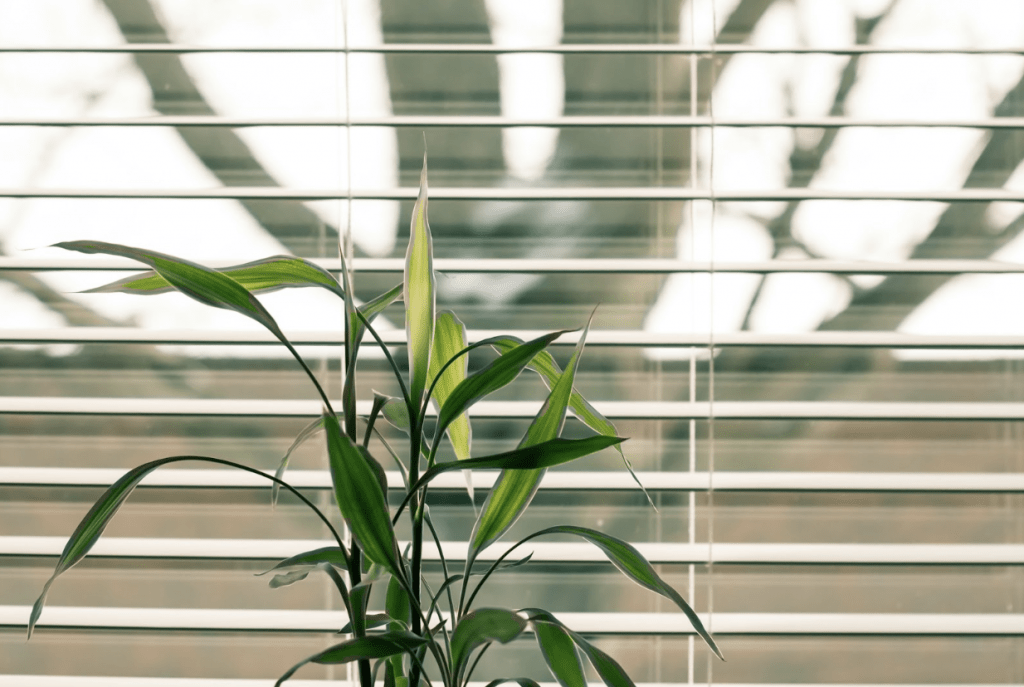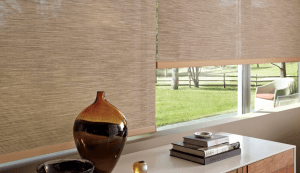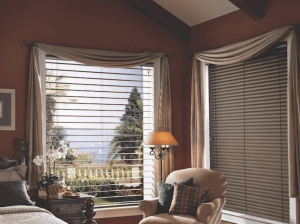Maintaining clean blinds isn’t just about aesthetics; it’s essential for a healthy living environment. Dust and allergens can accumulate on window treatments, exacerbating allergies and degrading the overall air quality of your home. In this guide, we’ll cover how to effectively clean various types of blinds, including mini blinds, vertical blinds, faux wood blinds, and wooden blinds. Whether your aim is to brighten a room or ensure a dust-free space, the right cleaning techniques can make a significant difference.
How to Clean Blinds: The Ultimate Guide
Why Regular Cleaning Is Important
The benefits of regularly cleaning your blinds extend beyond just keeping them looking good. Removing dust and debris helps to prevent the buildup that can lead to respiratory problems and allergic reactions. For those with allergies, clean blinds are a crucial step in minimizing indoor allergens. Regular maintenance also extends the life of your blinds, protecting your investment and maintaining the functionality and appearance of your window treatments.
Cleaning Materials You’ll Need
Before diving into the cleaning process, it’s important to gather the right tools to ensure you can clean effectively without damaging your blinds. Here’s what you’ll typically need:
- Microfiber cloths: Ideal for dusting and cleaning without leaving scratches or lint behind.
- Vacuum with a brush attachment: This helps remove dust from blinds gently and is particularly useful for vacuuming fabric blinds and horizontal blinds.
- Mild dish soap: Acts as a gentle cleaning solution for most types of blinds.
- White vinegar: Great for cutting through grime and providing a streak-free finish.
- Baking soda: Useful for addressing stubborn stains in the deep cleaning process.
- A bucket or bowl: For mixing cleaning solutions.
- Warm water: Used with dish soap and vinegar to create an effective cleaning solution.
- Gloves: Optional but recommended to protect your hands during the cleaning process.
By ensuring you have these tools at hand, you’re prepared to tackle any type of blind cleaning task, from a quick dusting to a thorough deep clean.
Step-by-Step Guide to Cleaning Blinds
General Cleaning Method for All Types of Blinds
Cleaning your blinds regularly is crucial to maintain their appearance and functionality. Here’s a simple method that works effectively across various blind types:
- Gather Your Cleaning Materials. Start by assembling all the cleaning tools and solutions you might need. Having everything on hand will make the process smoother and faster.
- Close and Dust the Blinds. Close the blinds so that the slats are flat and easier to clean. Use a microfiber cloth or a vacuum with a brush attachment to gently remove dust from the surface. Start from the top and move horizontally across each slat to ensure thorough coverage.
- Flip and Dust the Other Side. Once you’ve dusted one side, open the blinds and close them in the opposite direction to expose the other side. Repeat the dusting process to ensure both sides of each slat are clean.
- Wipe With a Damp Cloth (if needed). If your blinds are particularly dirty or have sticky spots, use a damp cloth with a mild cleaning solution of dish soap and warm water. Wring the cloth well to avoid dripping excess water, especially on wood blinds or wooden blinds. Gently wipe each slat from top to bottom. For fabric blinds, ensure the fabric is suitable for damp cleaning to avoid damage.
This general method is effective for routine cleaning and maintenance of window blinds. It’s suitable for most types of blinds including vertical blinds, horizontal blinds, wood blinds, and even delicate fabric blinds.
How to Clean Specific Types of Blinds
How to Clean Mini Blinds
Mini blinds, often featuring smaller slats, require a bit more precision during cleaning:
- Dusting and Wiping Down Mini Blinds: Use a microfiber cloth or a soft brush to gently remove dust from each slat. For deeper cleaning, especially if the blinds are in areas prone to kitchen grease or smoker’s residue, use a sock or glove dipped in a mixture of warm water and mild dish soap. Gently grip each slat and move your hand along its length to clean both sides at once.
- Special Tips for Smaller Slats: Because mini blinds have narrower slats, they can accumulate grime more quickly. Using a sock or small hand-worn fabric dipped in cleaning solution allows you to clean more thoroughly between the tight spaces, ensuring no spot is missed.
How to Clean Vertical Blinds
Vertical blinds require specific techniques to prevent damage during cleaning:
- Techniques for Stabilizing the Bottom of the Blinds While Cleaning: Hold the bottom chain or weight with one hand to keep the blinds steady. This prevents them from swinging and potentially getting damaged as you clean.
- Tips on Wiping from Top to Bottom to Avoid Unhooking: Gently wipe each vane from top to bottom with a microfiber cloth dampened with a mild cleaning solution. This method ensures that you don’t accidentally unhook the vanes, which can be a hassle to reattach.
- Option for Deep Cleaning: For a more thorough clean, especially if the blinds are heavily soiled, you can unhook the vanes and lay them flat in a bathtub. Use a mix of warm water, mild dish soap, and baking soda to soak the blinds, gently scrubbing any stubborn stains.
How to Clean Faux Wood Blinds
Faux wood blinds offer the beauty of wood with added durability, but they still require careful cleaning to maintain their finish:
- Recommended Tools: Use a clean, dry microfiber cloth for regular dusting. For more thorough cleanings, use a damp microfiber cloth with a very mild solution of dish soap and water.
- Avoiding Excessive Moisture: Faux wood can warp if exposed to too much water, so always wring out cloths thoroughly and avoid using any harsh cleaning chemicals.
- Detailed Approach for Tougher Spots: For stubborn stains, mix a small amount of dish soap with an equal part of white vinegar in warm water. Dip your cloth into the solution, wring thoroughly, and gently wipe the affected areas.
How to Clean Wooden Blinds
Wooden blinds add a touch of natural beauty to any space but require specific care to avoid damage:
- Dry Dusting Techniques: Regularly use a clean, soft microfiber cloth or a feather duster to remove surface dust. Avoid using water if possible to prevent warping and staining.
- The Use of Furniture Polish: To maintain the shine and condition of the wood, lightly spray furniture polish on a microfiber cloth and gently wipe each slat. This will help repel dust and keep the wood nourished.
- Avoiding Water to Prevent Wood Damage: Never use water on real wood blinds. If stains are present that dry dusting can’t remove, use a very slightly damp cloth with minimal water and immediately dry the area thoroughly.
Each type of blind requires a slightly different approach, but with the right tools and techniques, you can keep all your blinds looking like new.
Deep Cleaning Your Blinds
Deep cleaning your blinds is necessary when regular dusting and spot cleaning aren’t enough to remove heavy grime or sticky residues. This section will help you understand when a deep clean is required and how to effectively execute it.
When to Deep Clean Your Blinds
Here are some signs that your blinds need more than just the usual wipe-down:
- Sticky Residue: If your blinds feel sticky or grimy to the touch, it’s time for a deep clean. This is common in kitchen areas where cooking fumes and grease can settle on surfaces.
- Heavy Grime: Blinds in high-traffic areas or those near open windows can accumulate layers of dust mixed with environmental pollutants, necessitating a thorough cleaning.
- Visible Stains: If there are visible stains that regular cleaning can’t handle, such as pet stains or spills, a deep clean may be the only solution.
Deep Cleaning Method
Deep cleaning restores your blinds to a near-new condition. Here’s how to do it effectively:
- Removing Blinds from the Window:
- Carefully take down the blinds from the window. If you’re unsure how to do this without damaging the mechanisms, refer to the manufacturer’s instructions.
- Soaking Blinds in a Tub with Warm Water, Dish Soap, and Baking Soda:
- Fill a bathtub or a large basin with warm water. Add a gentle dish soap and a cup of baking soda to create a cleaning solution that will break down grime without harsh chemicals.
- Fully submerge the blinds in the tub, ensuring they are evenly coated with the solution. Allow them to soak for about an hour.
- Use a soft brush or a microfiber cloth to gently scrub each slat, paying special attention to areas with stubborn stains.
- Rinsing and Drying Methods:
- Drain the tub and rinse the blinds with clean, warm water to remove any soap residue.
- Carefully shake off excess water and lay the blinds on a clean, dry towel.
- Pat dry with another towel or allow them to air dry completely before rehanging them. Ensure they are fully dry to prevent any mold or mildew buildup.
This deep cleaning process can significantly extend the life and appearance of your blinds, making them look refreshed and well-maintained. However, it’s important to tailor your approach based on the material of the blinds to avoid any damage.
Additional Tips for Maintaining Clean Blinds
Maintaining clean blinds can be simple with the right practices in place. Here are some tips to help you keep your blinds looking their best for longer periods between deep cleanings.
How to Keep Blinds Clean for Longer
- Regular Dusting: Consistently dusting your blinds every week can prevent the accumulation of dust and allergens. This is especially important for fabric blinds and horizontal blinds, which can harbor more particles.
- Avoiding Sticky Sprays Near Blinds: Avoid using aerosol sprays such as air fresheners, hair sprays, or any other sprays near your blinds. These products can leave a sticky residue that attracts dust and dirt, complicating the cleaning process.
Tips for Specific Situations
- Cleaning Blinds with Pet Hair: If you have pets, their hair can get caught in the blinds. Using a vacuum with a brush attachment regularly can help remove pet hair effectively. For fabric blinds, a lint roller might also be useful.
- Dealing with Blinds in Kitchens: Blinds in the kitchen are prone to grease and food splatters. For grease buildup, use a cleaning solution of dish soap and warm water. The soap will cut through the grease, making it easier to wipe away without harsh chemicals.
By incorporating these maintenance tips into your regular cleaning routine, you can significantly reduce the need for frequent deep cleanings and maintain the quality and appearance of your blinds.
Brighten Your Space and Breathe Easier with Clean Blinds
Keeping your blinds clean not only enhances the look of your home but also contributes to a healthier living environment. Regular maintenance and timely deep cleanings will ensure that your blinds remain in excellent condition, offering both aesthetic and functional benefits.
We invite you to contact us at Reef Window Treatments for a consultation to explore the various options or browse our selection of Vertical Blinds, Wood & Metal Blinds, ensuring you find the perfect match for your home’s décor and maintenance needs. Let us help you transform your home with beautiful, efficient, and functional window treatments that reflect your style and enhance your living space.








